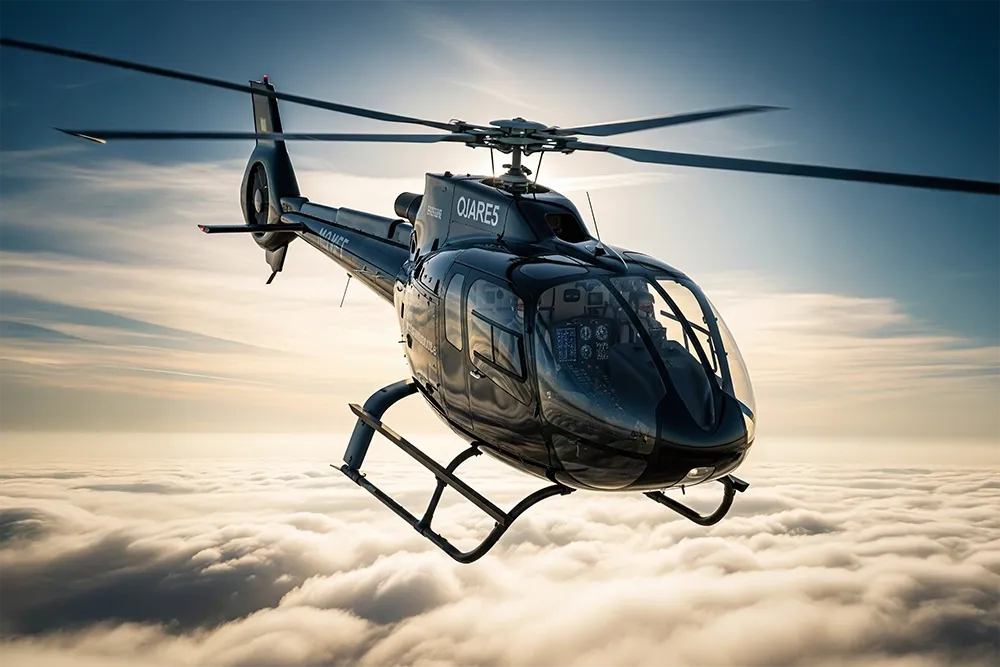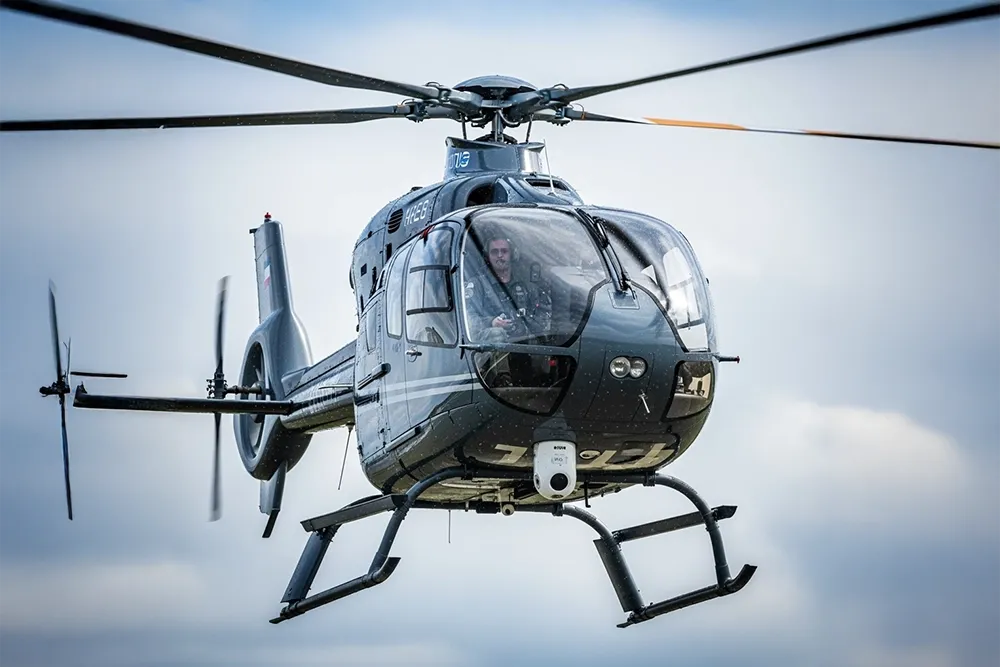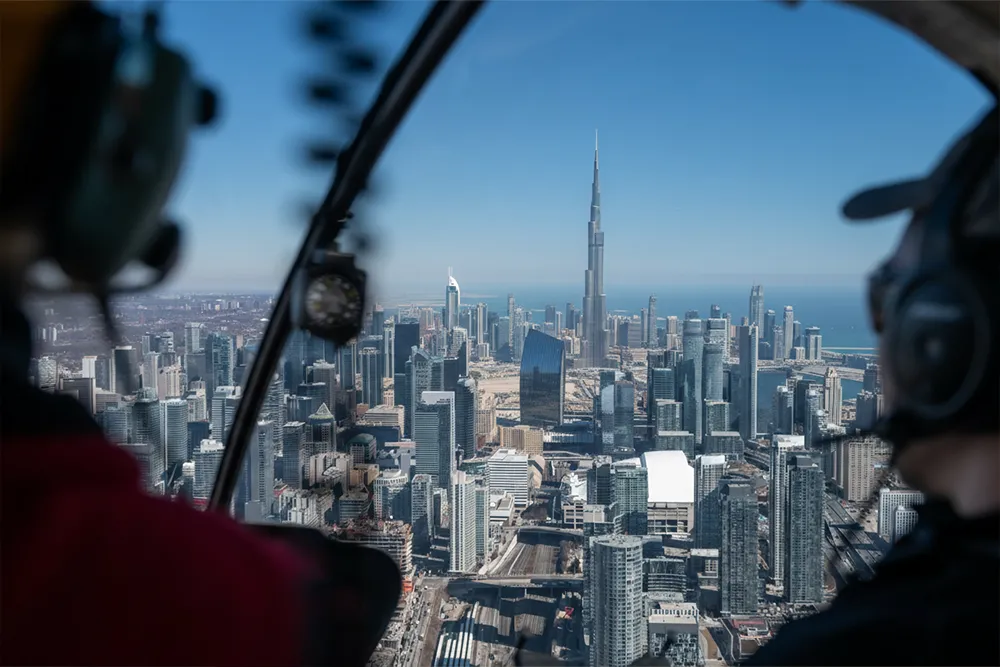Helicopter flights are thrilling and scenic, but stormy weather flying tips for helicopters should not be ignored at any cost. Regardless of whether you are a new rider or a frequent flyer, the importance of learning about guidelines for stormy weather flying for helicopters cannot be overstated.
In this blog, we provide safety tips for helicopter rides during bad weather, insights on what to expect during a helicopter ride in poor weather, how rain and wind impact helicopters, and how to prepare professionally for an unexpected change in the weather.
How Safe Are Stormy-Weather Helicopter Rides?
Stormy weather introduces factors like rain, wind, and visibility issues, all of which affect flight safety. Helicopters are highly versatile aircraft that can fly in mixed flying conditions, but only up to a point.
Most tour operators and airlines adhere to strict regulations and will not fly in bad weather. Light rain and moderate wind, however, are usually acceptable if managed by experienced pilots and approved by aviation authorities.
The Federal Aviation Administration (FAA) and GCAA UAE say helicopter flights are prohibited when there is severe turbulence, lightning, or adverse weather under regulated limits. Still, light rain and moderate winds are manageable, especially when flown by experienced pilots who follow stormy weather flying tips for helicopters.
What To Expect When Flying During Inclement Weather?
Weather turbulence is the most common discomfort experienced by passengers. But what actually occurs when a helicopter flies through rain or wind? Following are the conditions you might be facing;
Decreased Visibility
Rain and clouds reduce visibility. Pilots therefore monitor VFR (Visual Flight Rules) and IFR (Instrument Flight Rules) regulations prior to flight. In the event that weather catches up with them mid-flight, most helicopters are fitted with instruments such as:
- Weather radar
- Altimeters
- Artificial horizon aids
These instruments allow pilots to maintain direction and altitude even under low visibility.

Wind and Rain Effects
Light Rain: Generally bearable, especially for experienced pilots of enclosed rotor aircraft.
High Winds: Gusts or crosswinds make for a rough ride. Pilots trim altitude and heading to minimize discomfort.
Thunderstorms: Most commercial pilots avoid them entirely because lightning, hail, and microbursts could destabilize flight.
Understanding what to expect during a helicopter ride in poor weather helps passengers stay mentally prepared.
Top 7 Safety Tips for Helicopter Rides During Bad Weather
Before you take to the skies, preparation and knowledge are everything. Below are seven tips for stormy weather helicopter flying:
1. Look at the Weather Forecast Before Booking
Always check local weather. Use trusted aviation or meteorological websites such as AccuWeather or Windy. Steer clear of days when thunderstorms or heavy rain are forecast.
2. Fly with Reputable Operators Only
Not every helicopter service operates to the same safety standard. Always fly with a licensed service company who:
- Flights canceled or delayed due to bad weather
- Flies new helicopters equipped with certified weather equipment
- Complies with international aviation safety standards
3. Dress Comfortably and Appropriately
Blustery helipads and slippery surfaces can make getting on tricky. Dress in:
- Non-slip, closed footwear
- Layered clothing to manage variable cabin temperatures
- Waterproof jackets (especially if boarding outside)
4. Listen to the Pre-Flight Safety Briefing
Operators will provide weather-related guidance as part of your safety briefing. Listen carefully it will include:
- What to do in case of unexpected turbulence
- Use seat belt and headsets properly
- Emergency evacuation procedures
5. Stay calm in turbulence
Mild to moderate turbulence in clear weather is standard in helicopters. If bumps hit you:
- Wear seat belts
- Avoid making sudden movements with your body
- Trust your pilot, helicopter pilots regularly fly through changing air currents
6. Know When to Reschedule
Sometimes it's best to postpone flying another day. When visibility is bad or there's a threat of an impending storm, safety-minded operators will cancel as flexibility is one of the best safety tips for helicopter rides during bad weather.
7. Ask Questions
You shouldn't be shy about asking your pilot or crew:
- "Is it safe to fly a helicopter in rain?"
- "What if the weather deteriorates mid-flight?"
- "Can we divert somewhere if things become risky?"
Their answer will leave you comfortable and better informed.
How Do Helicopters Handle Bad Weather?
Helicopters individually have the capability of taking off and landing vertically, giving them flexibility in bad weather emergency landings. Helicopters also operate closer to the ground than airplanes, providing the capability for:
- Quick direction change
- Following terrain in low-visibility conditions
- Emergency descents to safe altitudes if needed
- Many current helicopters have:
- De-icing systems for cold weather operations
- Terrain awareness warning systems (TAWS)
- Advanced autopilot capabilities
These characteristics allow pilots to cope with light rain or unstable winds better in a secure manner.

What To Expect During A Helicopter Ride In Poor Weather?
Rainy season for regions like the UAE typically runs from November to March. Schedules would be adjusted for these months, and bookings may become non-lock-in because of shifting conditions.
Will Children Be Able to Fly Under Inclement Weather?
All operators have age limits and discourage flying young children in bad weather due to:
- Abrupt cabin pressure changes
- Potential turbulence
- Discomfort with senses of sound and movement
It is advisable to await fair weather when booking helicopter flights appropriate for children. Flying over stormy skies is not always dangerous, but it is premonitory and needs advance planning.
Use these stormy weather flying tips for helicopters to spice up your next adventure as much as it is secure. Safe aviation operators like Beno always prioritize safety, so leave the experts to it, plan ahead, and be prepared to reschedule in the event of a possible storm.
FAQs
- Can rain be flown in by a helicopter?
Light rain is generally safe when flown by trained pilots on properly equipped aircraft. Heavy rainstorms or lightning, however, may pose dangerous conditions and can lead to cancellations.
- What are safety tips for helicopter rides during bad weather?
Monitor weather forecasts, choose seasoned operators, dress accordingly, and follow all on-flight safety procedures. Always prioritize safety over scheduling.
- What occurs during a helicopter flight in adverse weather?
You will have less visibility, light turbulence, or wind blasts. Pilots use weather instruments to adjust altitude and direction so as to be safe.
- How do helicopters react to being exposed to adverse weather?
Helicopters use radar, autopilot, and TAWS systems to navigate through light rain or wind. They can also land hastily if needed, due to their vertical mobility.
- Should I cancel my helicopter tour in case of stormy weather?
Yes. In the event of thunderstorms, strong winds, or lightning being forecasted, it is better to cancel or reschedule. Most operators will offer free rebooking facilities.








